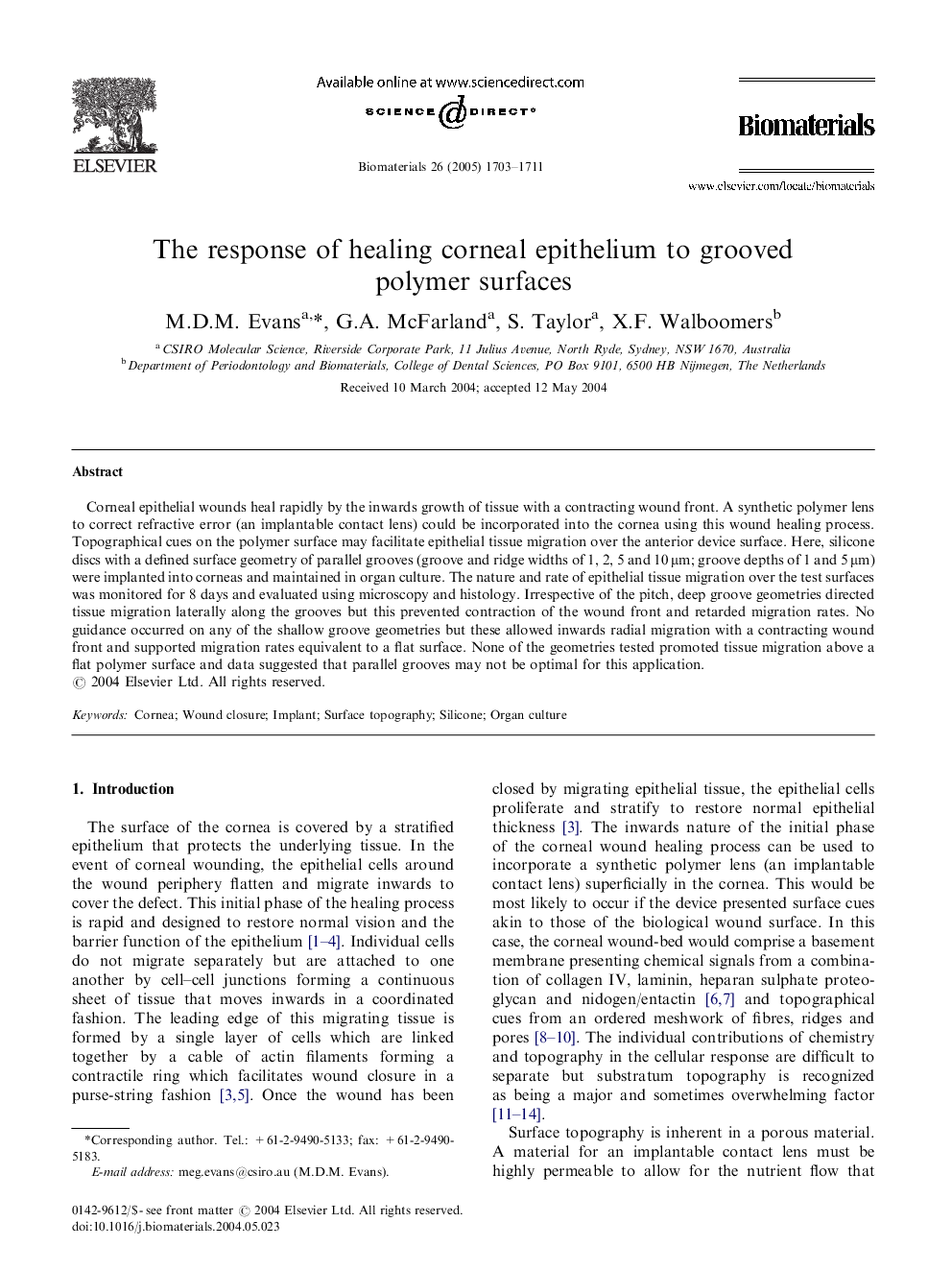| Article ID | Journal | Published Year | Pages | File Type |
|---|---|---|---|---|
| 12362 | Biomaterials | 2005 | 9 Pages |
Corneal epithelial wounds heal rapidly by the inwards growth of tissue with a contracting wound front. A synthetic polymer lens to correct refractive error (an implantable contact lens) could be incorporated into the cornea using this wound healing process. Topographical cues on the polymer surface may facilitate epithelial tissue migration over the anterior device surface. Here, silicone discs with a defined surface geometry of parallel grooves (groove and ridge widths of 1, 2, 5 and 10 μm; groove depths of 1 and 5 μm) were implanted into corneas and maintained in organ culture. The nature and rate of epithelial tissue migration over the test surfaces was monitored for 8 days and evaluated using microscopy and histology. Irrespective of the pitch, deep groove geometries directed tissue migration laterally along the grooves but this prevented contraction of the wound front and retarded migration rates. No guidance occurred on any of the shallow groove geometries but these allowed inwards radial migration with a contracting wound front and supported migration rates equivalent to a flat surface. None of the geometries tested promoted tissue migration above a flat polymer surface and data suggested that parallel grooves may not be optimal for this application.
